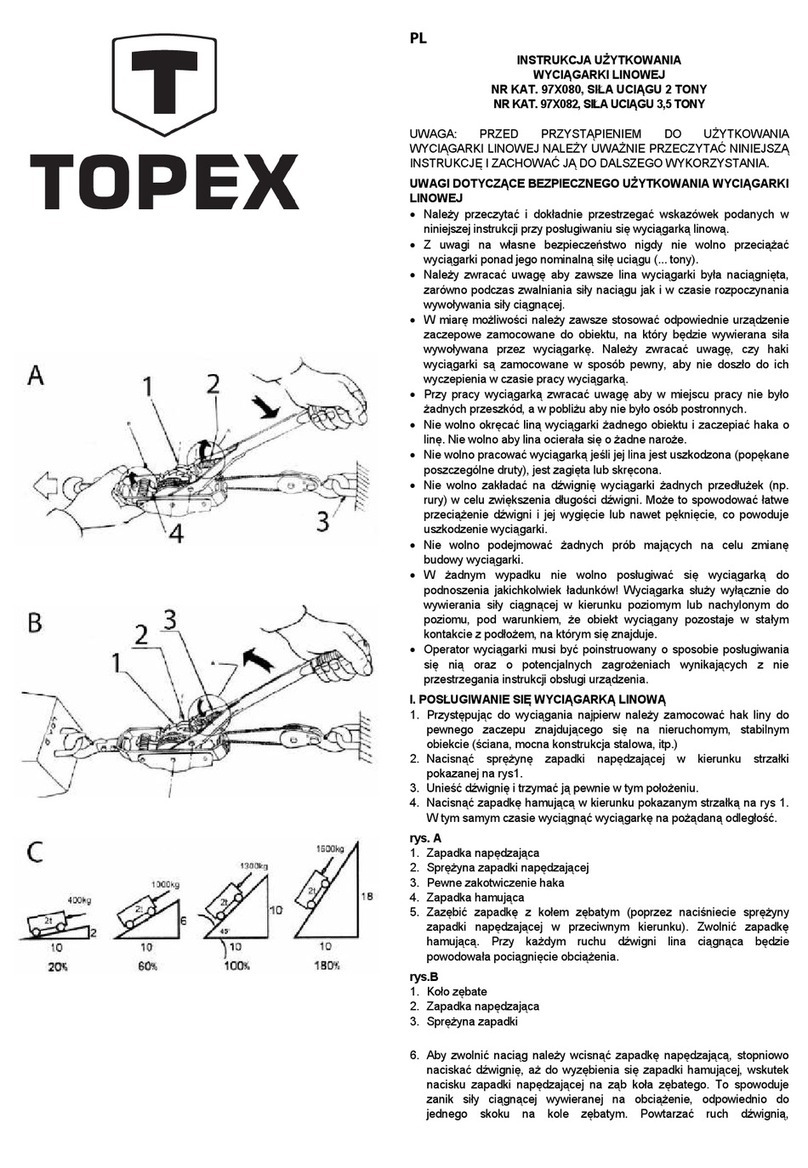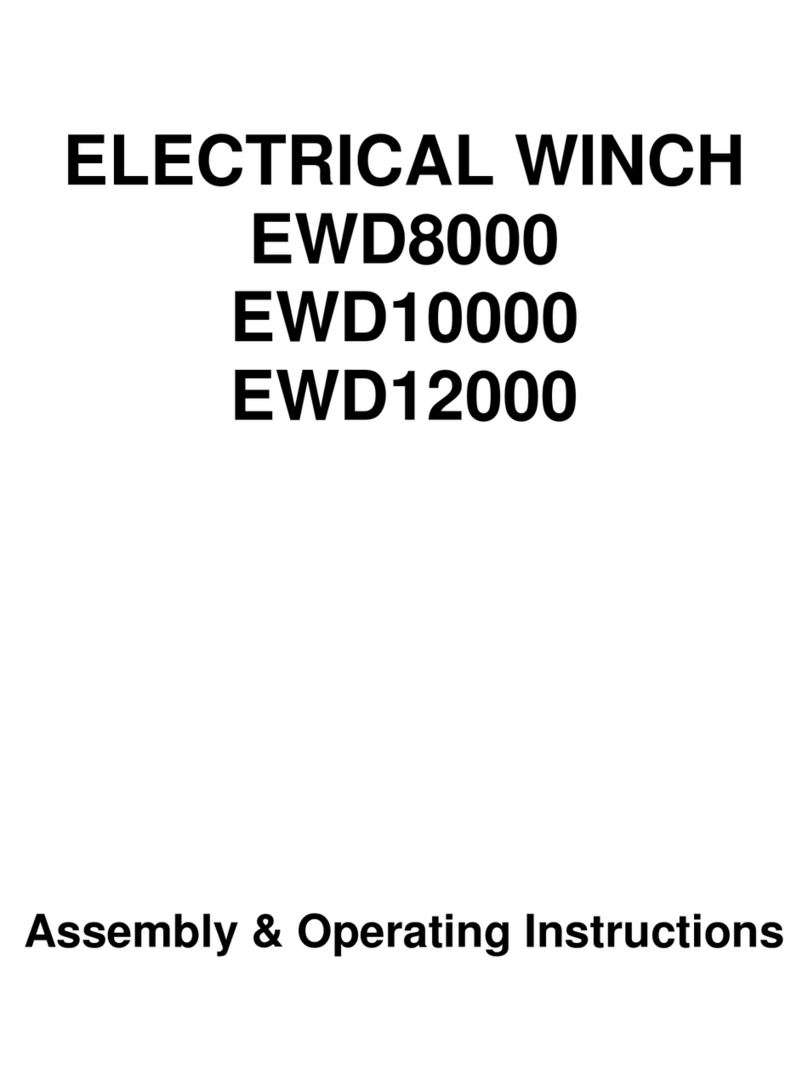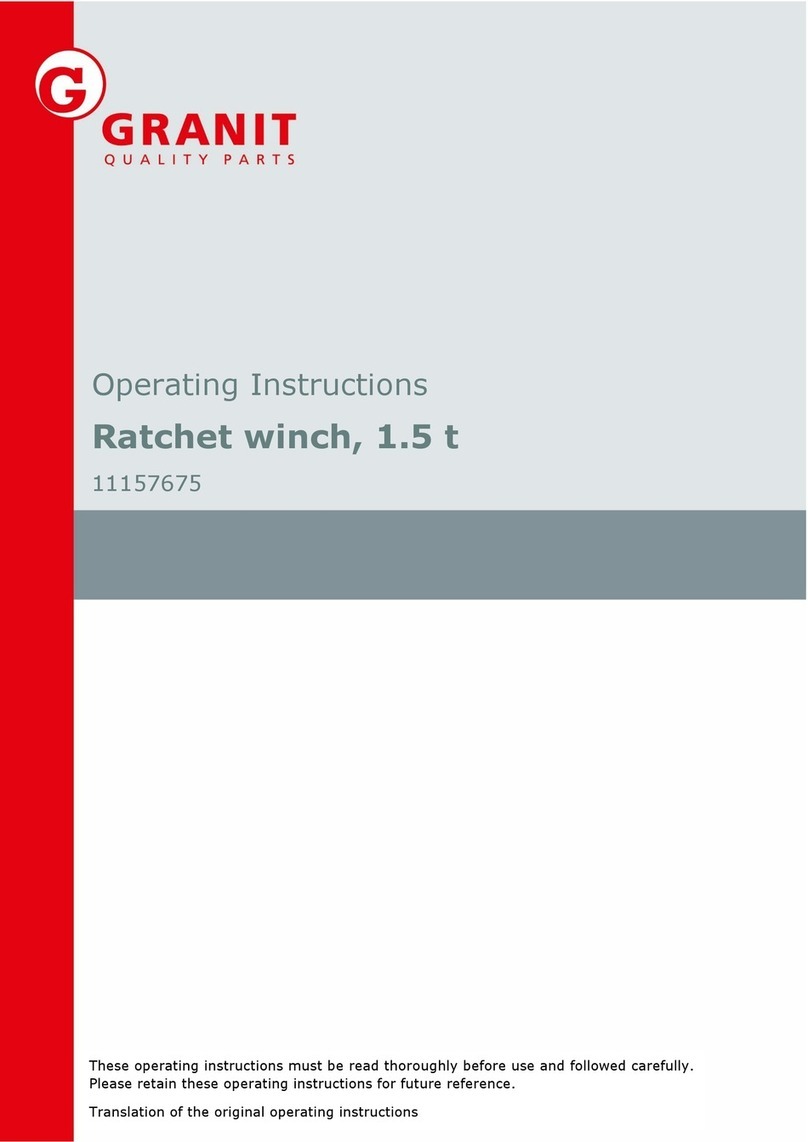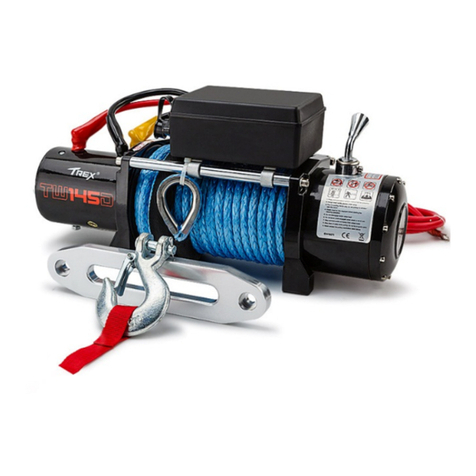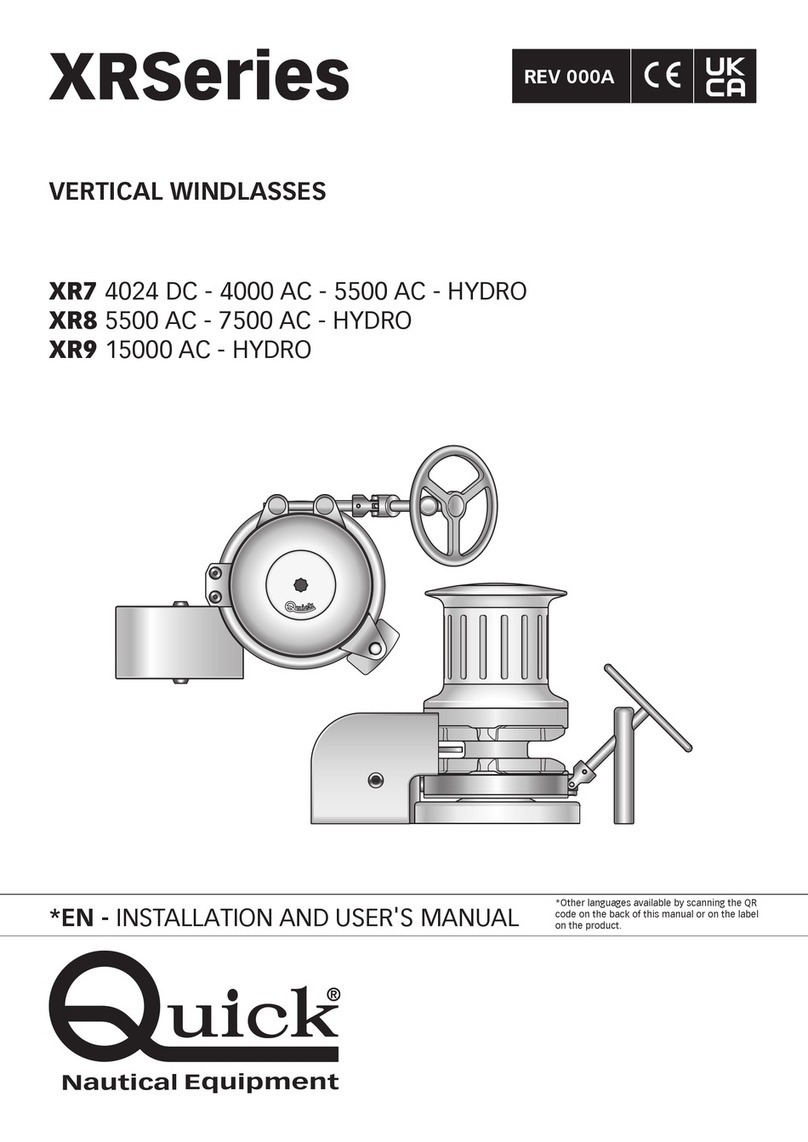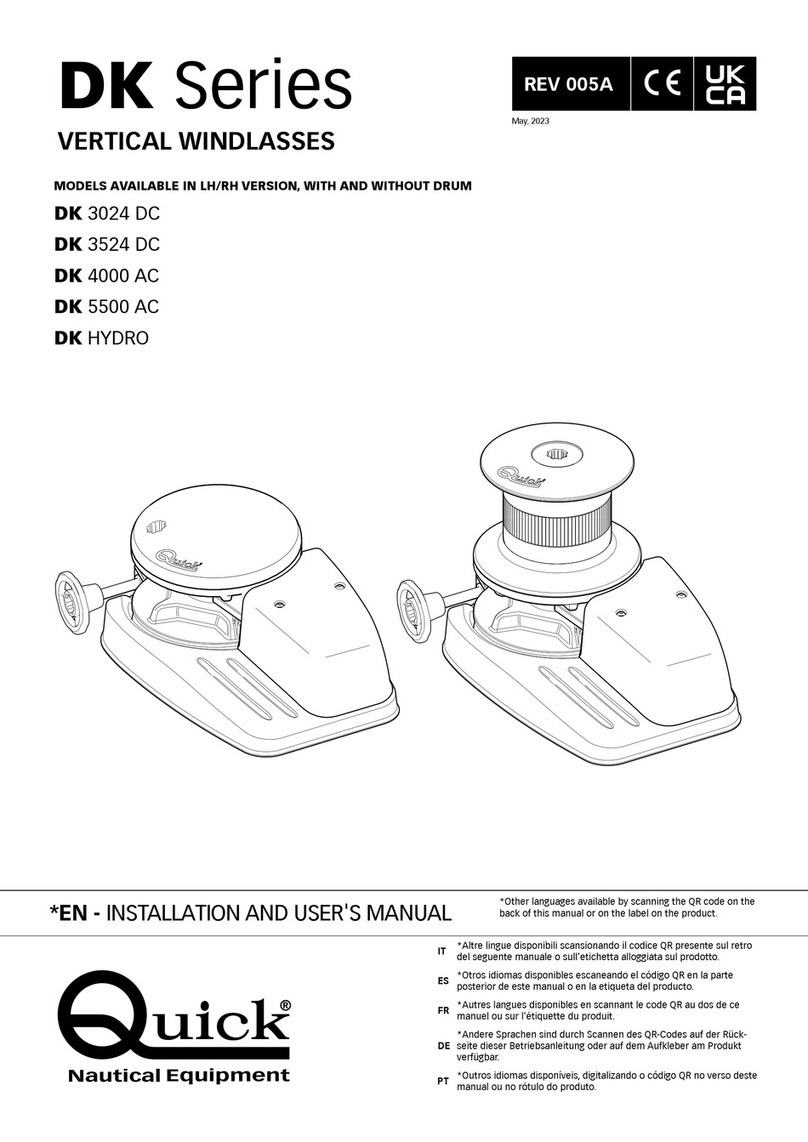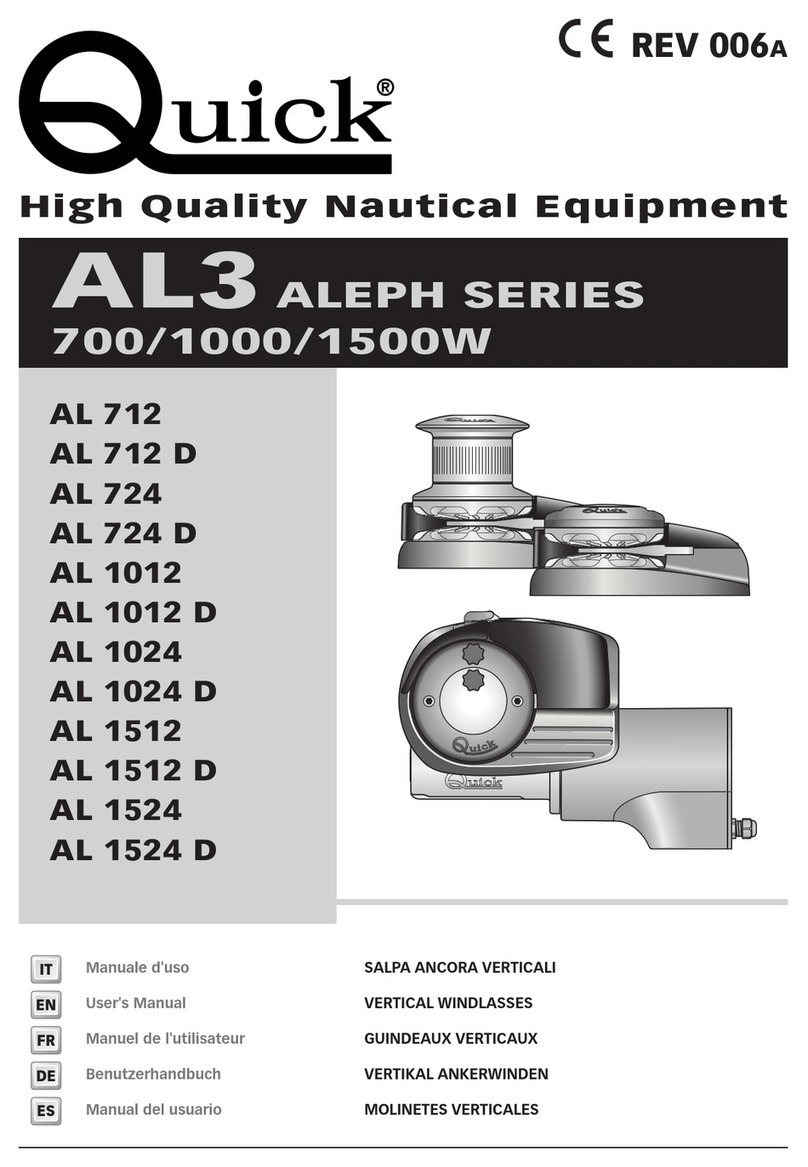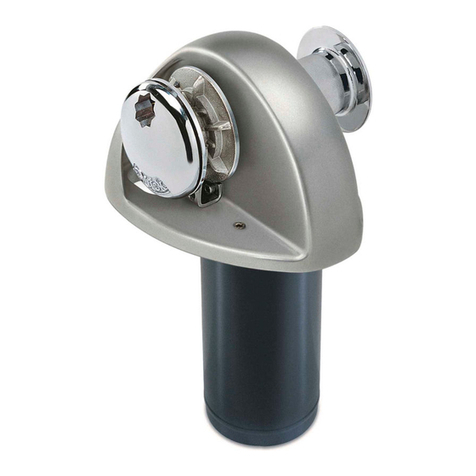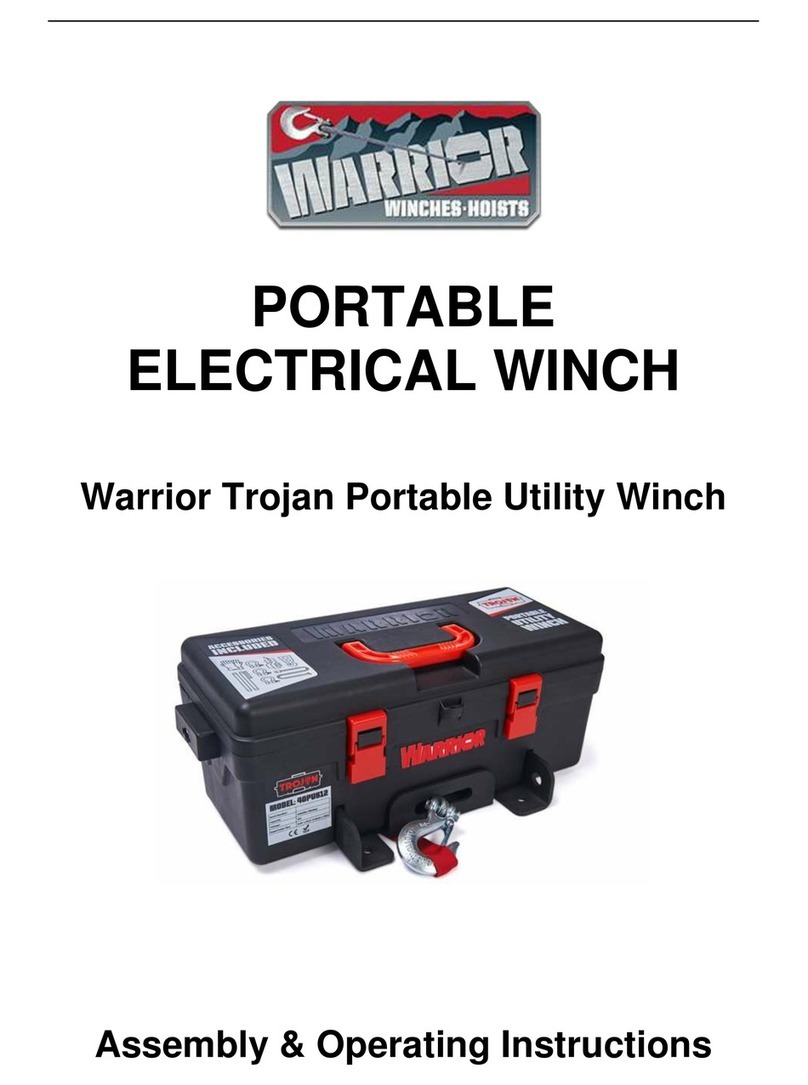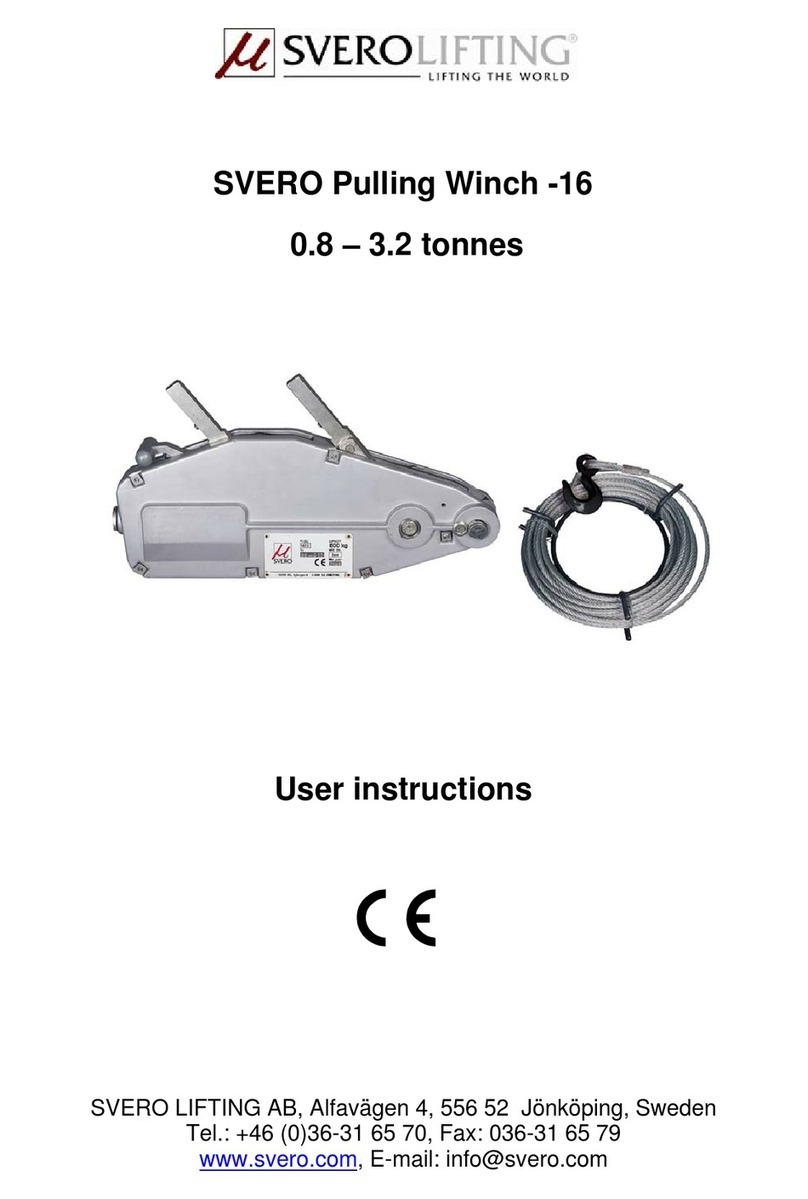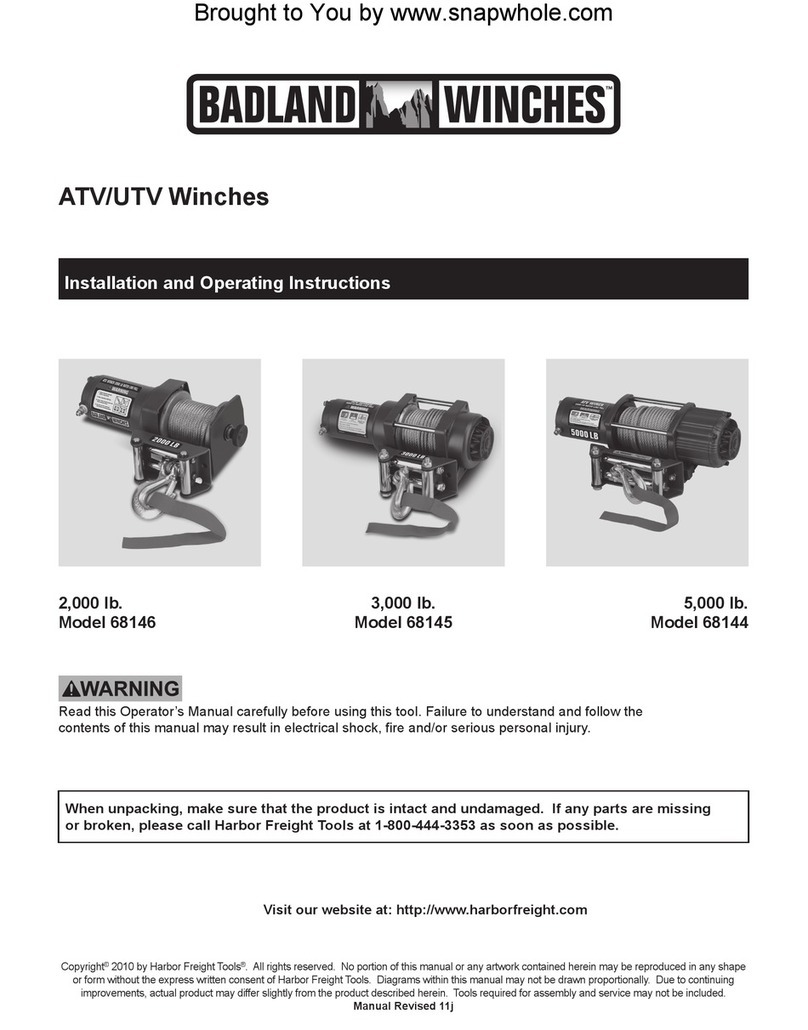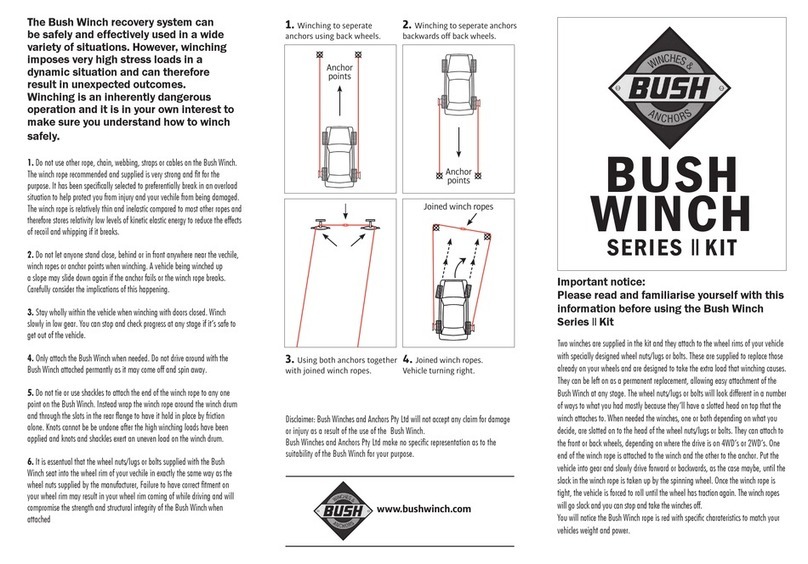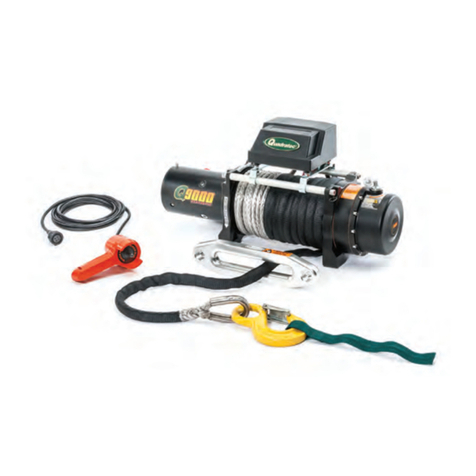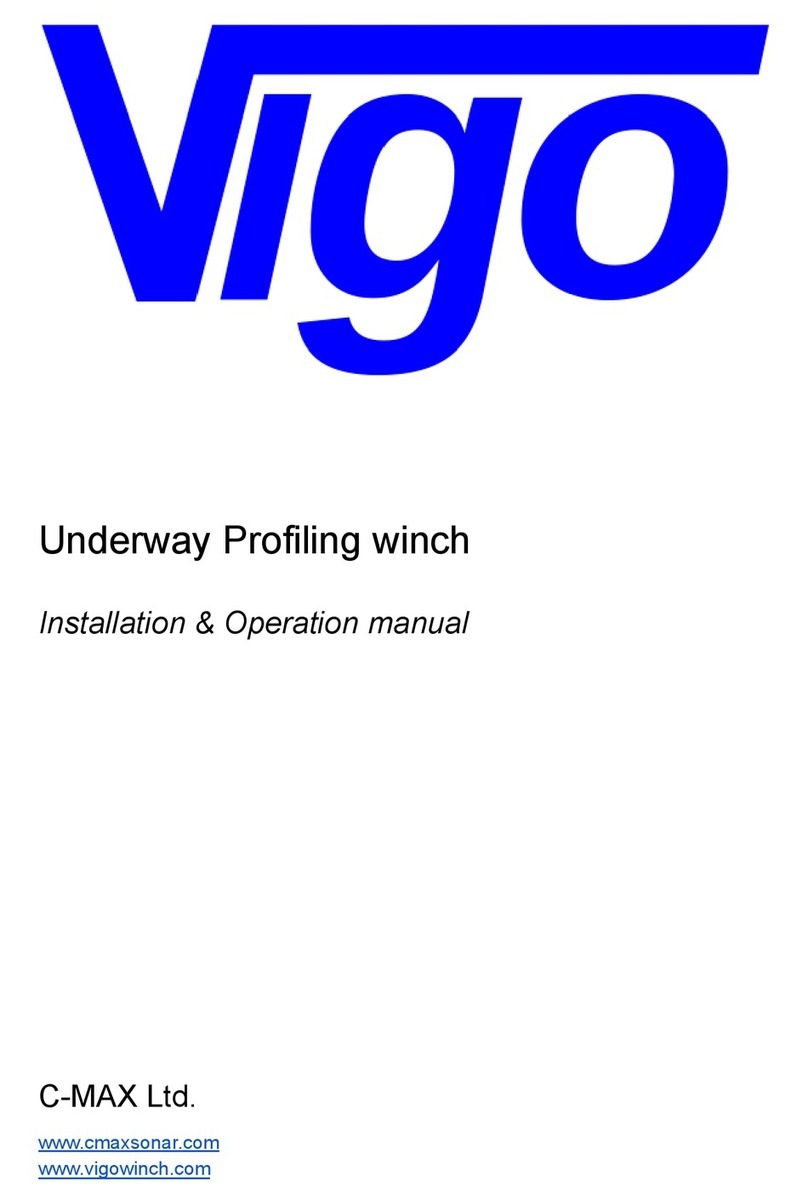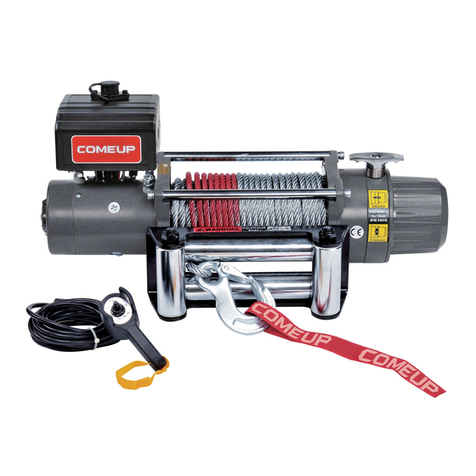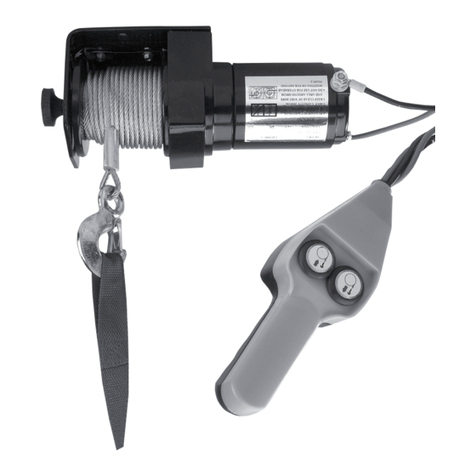9
ATTENZIONE: accertarsi che non sia presen-
te l’alimentazione al motore elettrico quando si
opera manualmente sul salpa ancora; rimuove-
re con cura la catena o cima dal barbotin o la
cima dalla campana.
I salpa ancora Quick sono costituiti da materiali resi-
stenti all’ambiente marino: è indispensabile, in ogni
caso, rimuovere periodicamente i depositi di sale che
si formano sulle superfici esterne per evitare corrosio-
ni e di conseguenza danni all’apparecchio.
Lavare accuratamente con acqua dolce le superfici e
le parti in cui il sale può depositarsi.
Smontare una volta all’anno il barbotin e la campana
attenendosi alla seguente sequenza:
VERSIONE CON CAMPANA
Con la leva (35) svitare la bussola (34); estrarre la cam-
pana (33) e il cono frizione superiore (29); svitare le viti
di fissaggio (2 o 19) dello stacca catena (3 o 20) e ri-
muoverlo; estrarre il barbotin (31).
VERSIONE SENZA CAMPANA
Con la leva (35) svitare il coperchio barbotin (32);
estrarre il cono frizione superiore (29); svitare le viti di
fissaggio (2 o 19) dello stacca catena (3 o 20) e rimuo-
verlo; estrarre il barbotin (31).
Pulire ogni parte smontata affinché non si verifichino
attacchi di corrosione e ingrassare (con grasso mari-
no) il filetto dell’albero (22 o 23) e il barbotin (31) dove
appoggiano i coni frizione (29).
Ingrassare periodicamente il perno (5) dello sportello
di ispezione (solamente per salpa ancora con base in
alluminio).
Rimuovere eventuali depositi di ossido sui morsetti di
alimentazione del motore elettrico e su quelli della
cassetta teleruttori; cospargerli di grasso.
POS. DENOMINAZIONE CODICE
14A Motore 700W 12V EMF071200000
14B Motore 700W 24V EMF072400000
14C Motore 1000W 12V EMF101200000
14D Motore 1000w 24V EMF102400000
14E Motore 1400w 12V EMF141200000
14F Motore 1400w 24V EMF142400000
15 Chiavetta MBH050515F00
16 Guarnizione/dima Rider PGBSC1000000
17 Base circolare SGMSC10C0000
18 Sensore SAKREED00000
19 Vite MBV0620MXSC0
20 Stacca catena per base Rider MSN10CX00000
21 Chiavetta MBH080780F00
22 Albero corto MSAS10274R10
23 Albero lungo MSAS10308R00
24 Anello elastico esterno MBAE2520Y000
25 Cuscinetto MBJ60052RS10
26 Anello elastico interno MBAN4717Y000
27 Paraolio PGPRL2547700
28 Rondella sagomata MBR254025X00
29 Cono frizione MSF100000000
30 Magnete KPMC08060000
31A Barbotin 6 mm ZSB100600000
31B Barbotin 8 mm-5/16" ZSB100851600
31C Barbotin 10 mm-3/8" ZSB101038000
32 Coperchio barbotin MSGB10000R01
33 Campana MSE100000R01
34 Bussola MSD100000R01
35A Leva 700-1000W MSHD00000000
35B Leva 1400W ZSLMSH000000
36 Vite tendicima MSMVT1000000
37A Leva tendicima nera PDLVTD100000
37B Leva tendicima bianca PDLVTD10W000
38 Molla tendicima MMTND1000000
39A Carter 700W PCCCPM070000
39B Carter 1000-1400W PCCCPM010000
40 Guarnizione morsettiera
700-1000-1400W PCGPMMR00000
41 Coperchio morsettiera
700-1000-1400W PCCPPMMR0000
42 Vite MBV02213AXSC
43 Guarnizione fondo
700-1000-1400W PGGPMFN00000
44 Coperchio fondo
700-1000-1400W PCCPPMFN0000
45 Passacavo PPM20B000000
MANUTENZIONE
I
